Bhutan, Nepal & the Mystical Himalayas
October 5-27, 2011
BHUTAN - October 7-13, 2011
Page Three - Overland to Punakha, Bhutan
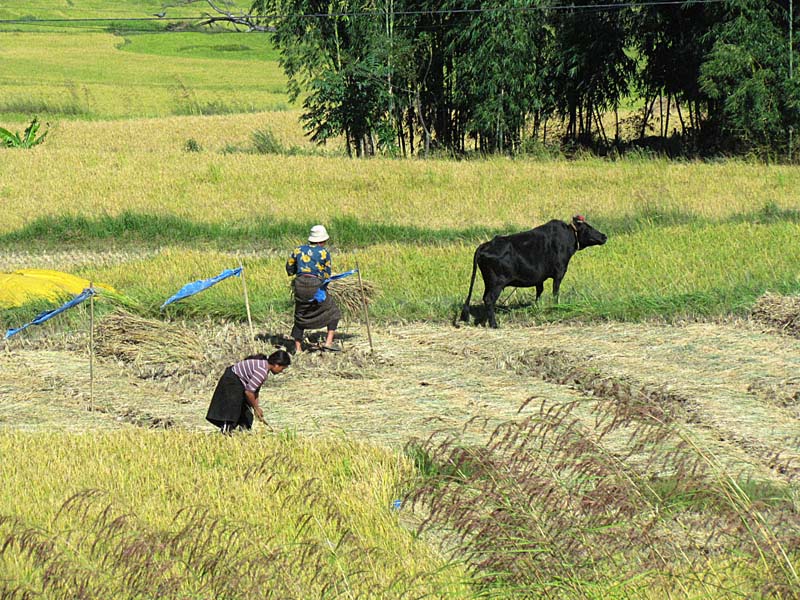
Women harvesting rice
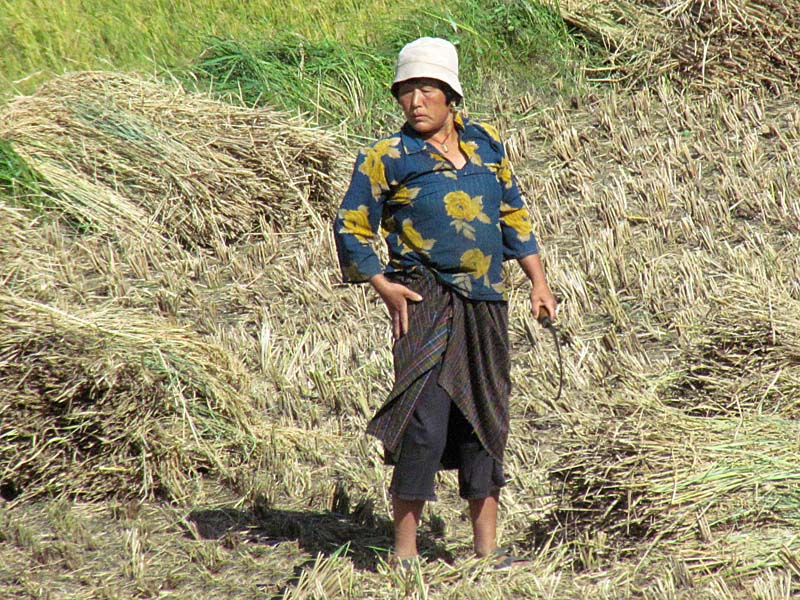
Farmers use the sickle to cut the stalks which are arranged in rows and left in the field for the night. On the second day a bamboo mat
called pari is spread on the field on which the stalks are stacked in a pile. Later the stalks
are hit to start the process of separating the grain from the straw.
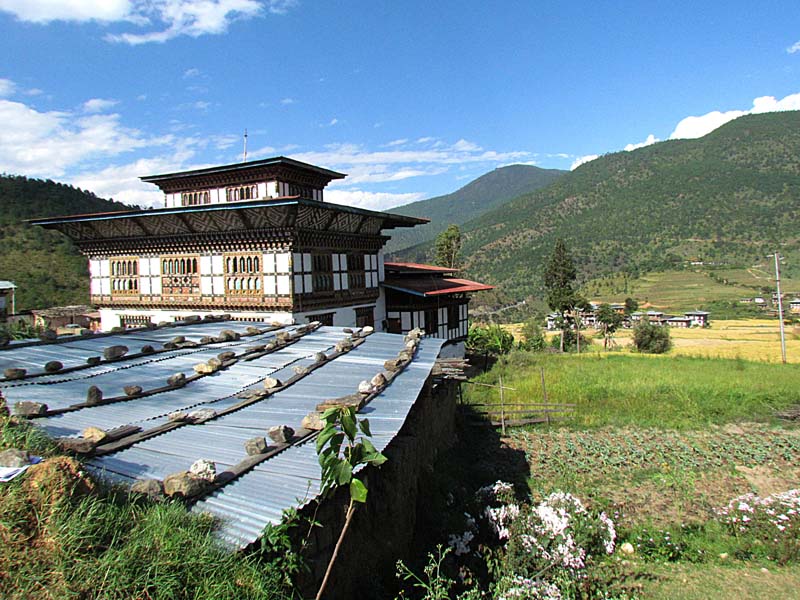
Farm home. Note roof with rocks on it to
hold down the roof.
Bhutanese architecture is characterized by structural designs and exterior paintwork (shapes, colors, and patterns),
representing national identity and traditional meanings. Dzongs (fortresses), Gompas (monasteries), Chortens (shrines/stupas),
Lakhangs (temples) and houses are impressive and important structures in Bhutan.
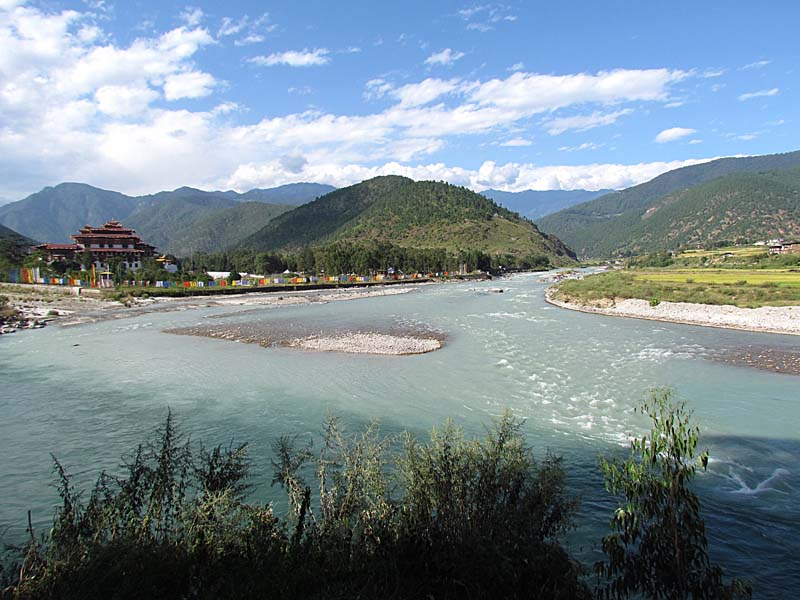
On the left in the photo, the Punakha Dzong, (“the palace of great happiness") is the administrative center of Punakha dzongkhag (district).
Constructed in 1637–38, it is the second oldest and second largest dzong in Bhutan and one of its most majestic structures.
The Dzong houses the sacred relics of the southern Drukpa Kagyu Buddhist school. Punakha Dzong was the administrative center
and the seat of the Government of Bhutan until 1955, when the capital was permanently moved to Thimphu. Previously, the government moved every
year from Thimphu to Punakha in the winter due to the more temperate climate in Punakha.
The head of the clergy of Bhutan with his entourage of monks still spend the winter in this dzong.
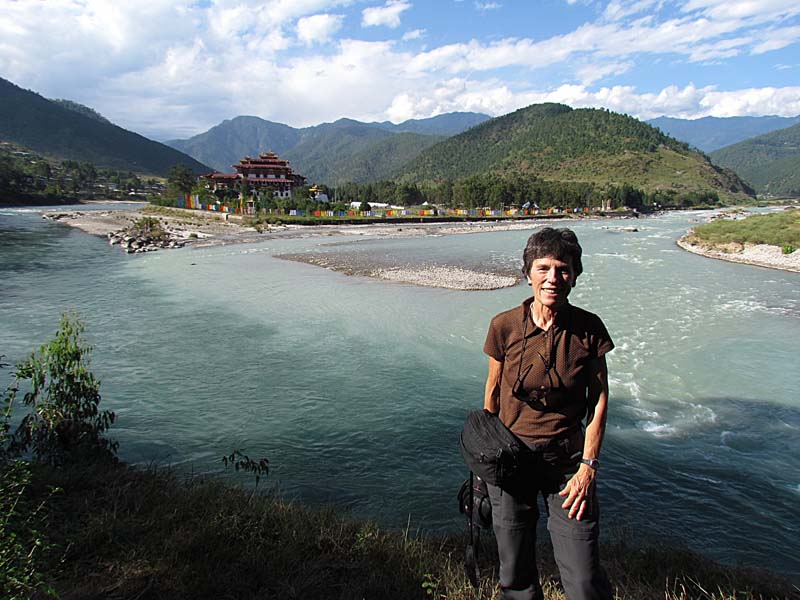
Pat at the location where the 2 rivers come together where Punakha Dzong was built,
the Pho Chhu (father river) & Mo Chhu (mother river) in the Punakha–Wangdue valley.
The Wangchuk Monarchy is currently heading the country. This monarchy was established in 1907.
The same year, Punakha Dzong was the site of the coronation
of Ugyen Wangchuck as the first King of Bhutan. At that time,
Punakha was the winter capital of Bhutan. Three years later, a treaty was signed at Punakha
whereby the British (who were then in control of India) agreed not to interfere in Bhutanese internal affairs
and Bhutan allowed Britain to direct its foreign affairs. Now it does the same with India.
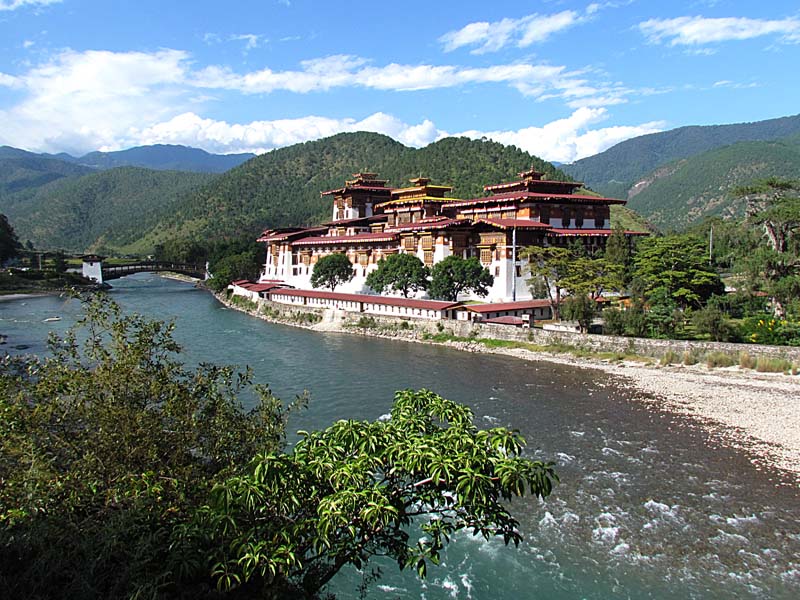
The wedding of the current King of Bhutan, Jigme Khesar Namgyel Wangchuck, and his fiance, commoner Jetsun Pema, was held at the Punakha Dzong
on October 13,
the day our tour group left Paro, Bhutan to fly to Kathmandu and Nepal.
While we were in Bhutan, we saw people
everywhere getting ready for the wedding - decorating, cleaning, etc. The whole country seemed excited in anticipation of the event.
A covered wooden cantiliver bridge crossing the Mo Chhu river was built together with the Dzong in the 17th century. This bridge was
washed away
by a flash flood in 1957. In 2006, work started on a new wooden cantilever bridge in the traditional style,
with a free span of 180 ft. It was completed in 2008. After completion, the new bridge was hailed as a celebration
of 100 years of Wangchuck Monarchy.
The Dzong has been the location for coronation of all the kings of Bhutan.
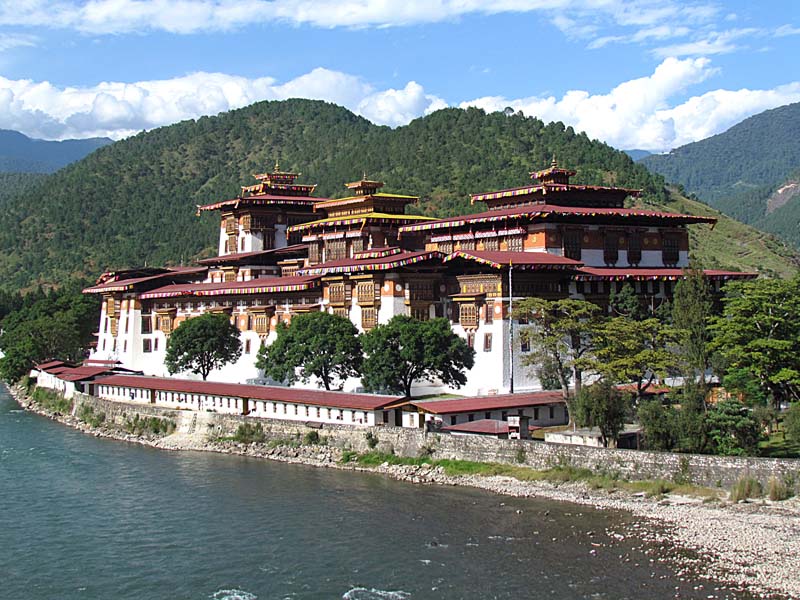
Dzongs or Bhutanese fortresses originated in 12th century, and their main purpose was to fend off enemy’s attacks and be the seat of central authority.
Thus, they were mostly built strategically on a mountaintop, overlooking a valley or confluence of two rivers, from where the enemy
can enter. Whenever there was an attack, the people from the entire valley could be accommodated safely within the fortified walls
of these dzongs. Dzongs have always served both as the centers of administration and also as centers of religion and culture.
Most dzongs have monasteries that serve as residence for monks and give them religious training. However, the
administrative section of a dzong and the monastic section are clearly separated. The chief architectural elements of a Dzong
are its massive stonewalls leaning slightly inwards, intricate woodwork on windows and wooden cornices. Bhutanese dzongs
are architecturally magnificent and house some of the finest murals, carvings and sculptures, ancient hand printed scripts,
rare artifacts and textiles. The stonewalls of a dzong are massive, painted in white and steep with high windows that are totally
inaccessible from outside.
When dzongs were first built in Bhutan, large and powerful families used them as their ‘royal castles’ for centuries.
In the first half of the 17th century, Lama Ngawang Namgyel built a new set of fortresses or dzongs that were used
as relays for the central authority, as a seat of administration and to fend off any attacks on the borders of the country.
They also acted as monasteries and thus, played a significant role in the religious life of the people.
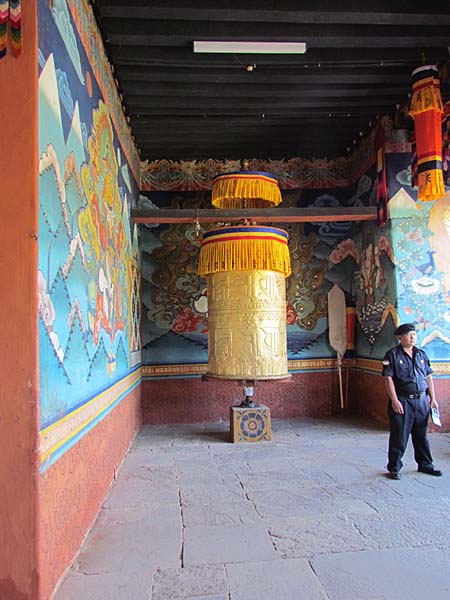
Made of metal, leather, or wood and ranging in size from a soup can to a 500-gallon drum –
each prayer wheel is inscribed and packed with written prayers.
With a push of one's hand the prayer wheel cylinder whirls. Each revolution counts as an uttered prayer.
You must push the prayer wheel to turn clockwise and always walk around it clockwise.
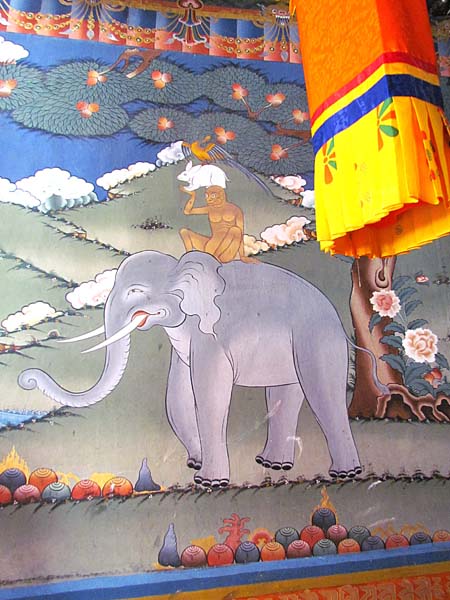
Famous painting of an elephant, monkey, rabbit, & bird that you see often in Bhutan. This one is at an exterior wall at Punakha Dzong.
The painting is in many Bhutanese homes, temples, monasteries, and dzongs in the form of a wall painting.
It symbolizes interdependence despite the difference in size and strength of the animals. It is an epitome of friendship,
cooperation, good relations without considering hierarchy, strength, power, or size.
It depicts the virtues of Buddhist morals. At a single glance, one will know that four different species of animals are united in harmony.
One story about these animals is that the bird found the seed, the rabbit dug the whole to put the seed in the ground, the monkey
watered the seed, and the elephant protected the plant as it grew into a fruit tree, and they all then shared the fruit, with the moral
being: "If these 4 disparate animals can work together in teamwork, then why can't we all."
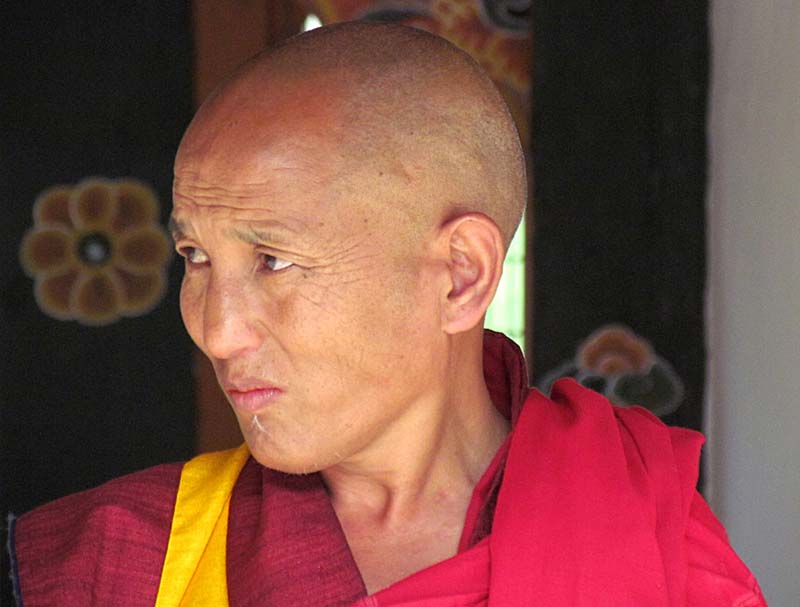
An adult monk at Punakha Dzong
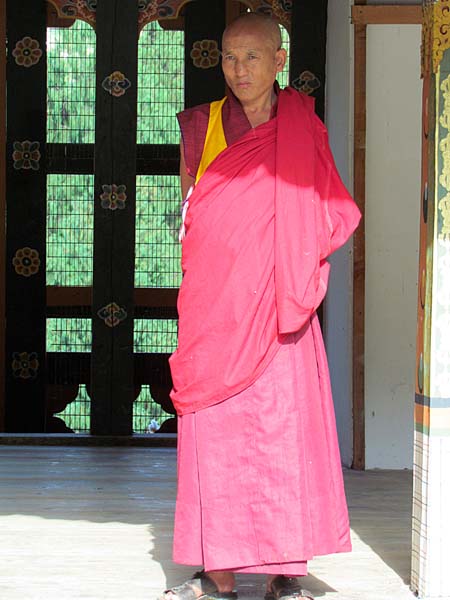
Full length photo of the same monk
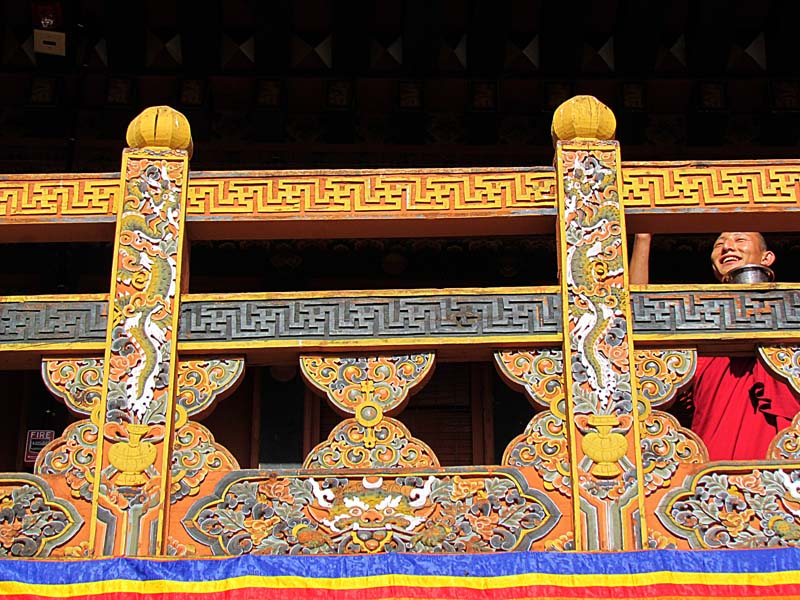
Highly decorated walkway above third courtyard at Punakha Dzong

A protective spirit decoration on an exterior wall at Punakha Dzong
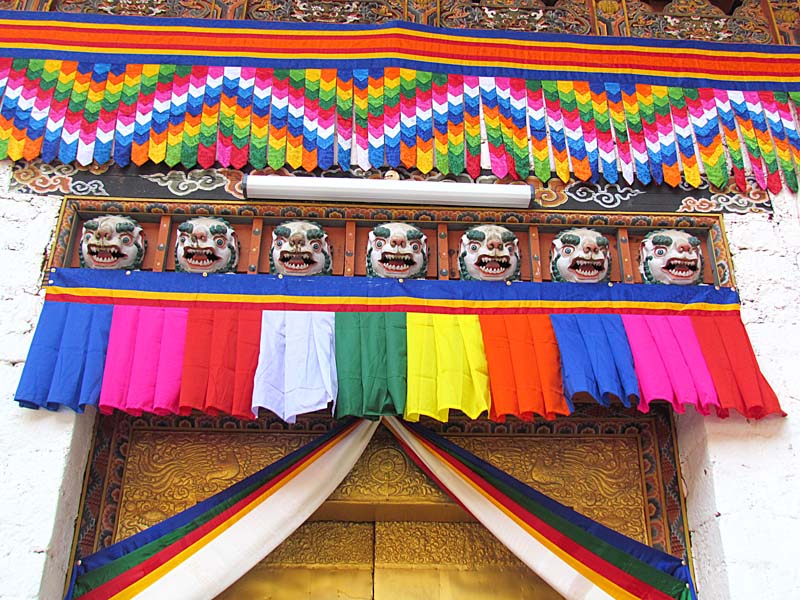
Walls painted in bright colors with symbols, designs and images of Buddhist deities, lamas and saints make these religious buildings unique.
Monasteries may have chapels or lhakhands portraying protective spirits in most fearsome and angry forms.
They represent defenders of religion who can destroy any enemies around us.
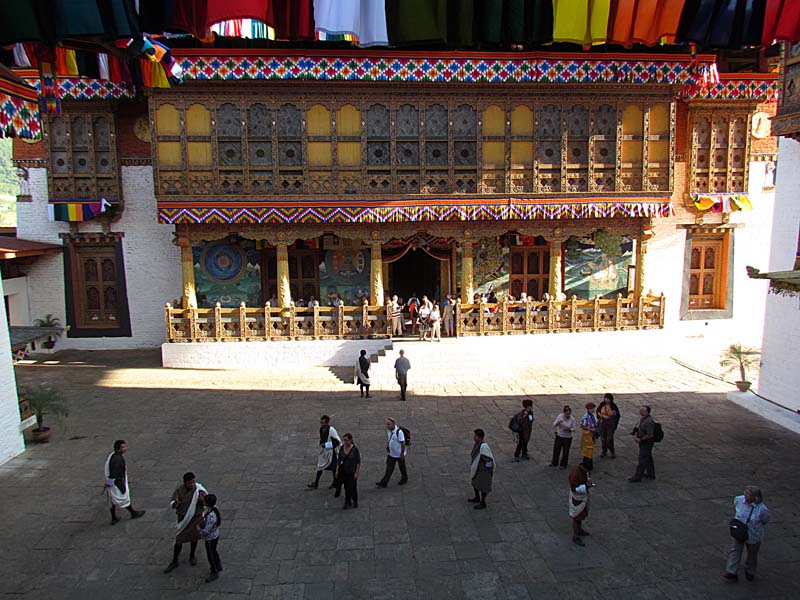
The third courtyard at Punakha Dzong and monks' assembly hall. Courtyards at temples and monasteries are
used for communal gatherings, festivals and dance performances
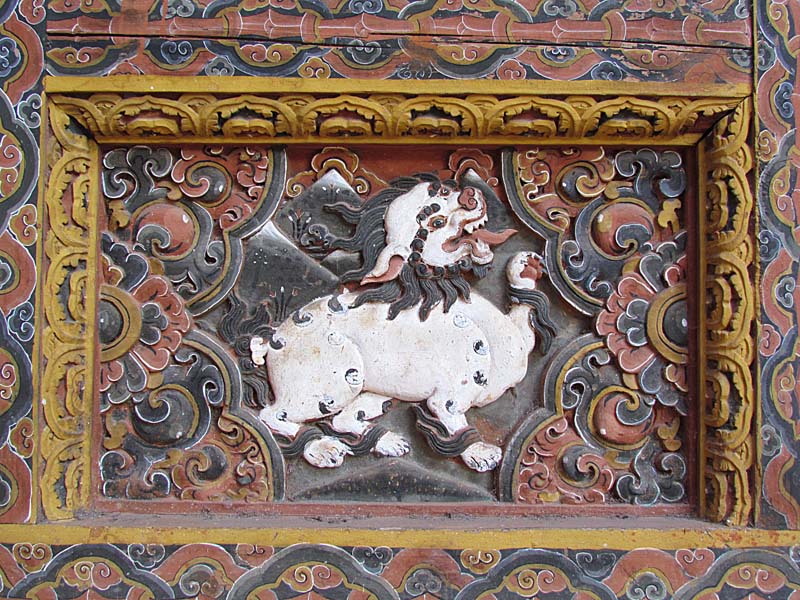
Another exterior wall figure
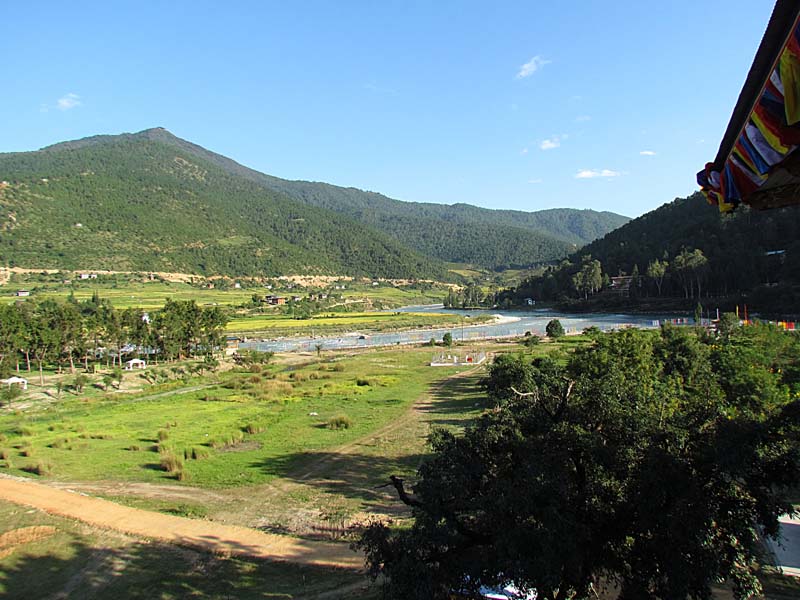
View of the 2 rivers from Punakha Dzong, Pho and Mo
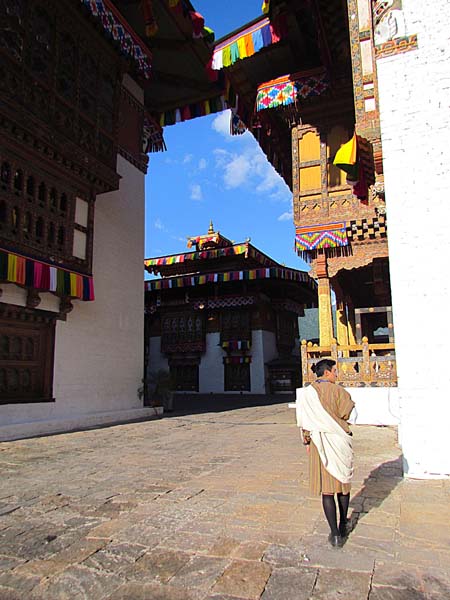
Our guide Tsering wearing the required white shawl over his gho, since he
was at a dzong where even more formality is required.
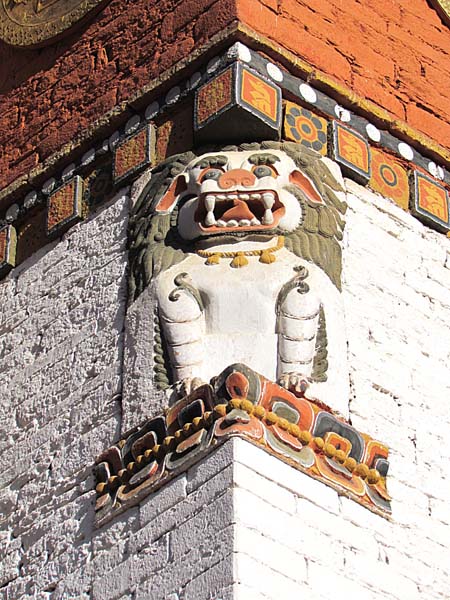
One of the protective spirit decorations on an exterior wall at Punakha Dzong
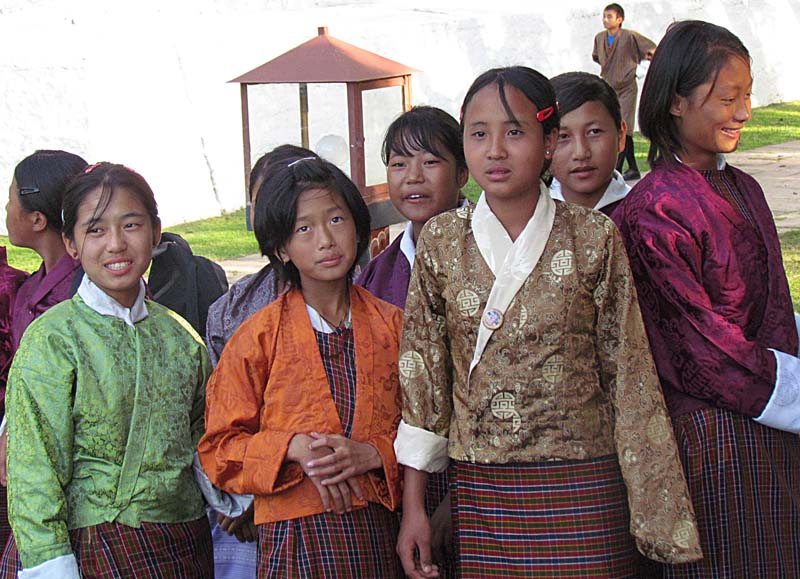
These young girls are wearing the national dress for women, the kira, with a silk jacket over it.
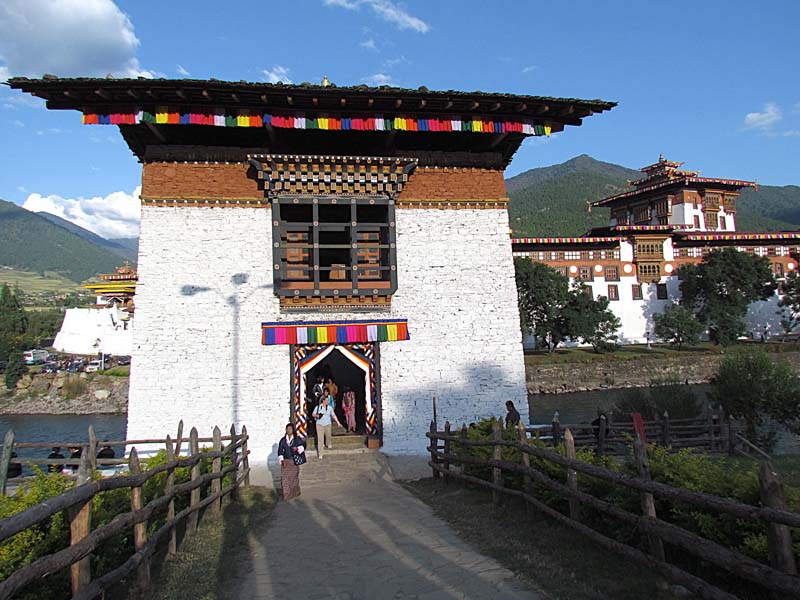
Entrance to the cantilever bridge over the river that accesses Punakha Dzong
Link to Page Four - Bhutan Continued- Punakha and surrounding valleys
Pat's Home Page